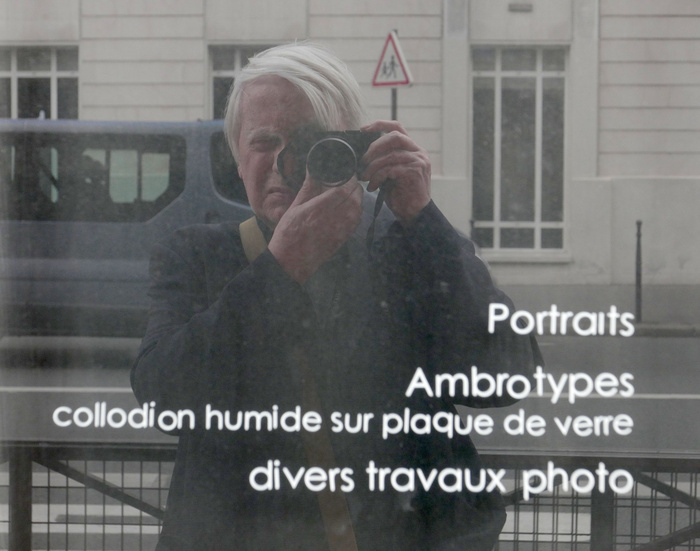Doug Richardson - Photographic Technology - Old and New
21st November 2025
In: Short Stories, News
Photo Technology Old and New
by Douglas Richardson
While en-route to a favourite restaurant in Paris one day in July 2016, I noticed that one of the shops in the Rue La Fayette, a street that I knew well, had been re-developed to become a photographic studio. Its new frontage included a window made of reflective dark glass, which listed several rather unusual photographic services involving photographic processes long considered obsolete – Ambrotypes, and images captured by the wet-plate collodion process.
The use of wet plates (which had to be prepared, exposed and processed before the sensitive coating had dried) had begun in the early 1850s but ended with the arrival of dry plates in 1870s. The Ambrotype was another wet-plate process, but created Daguerreotype-style positive images, rather than photographic negatives. Introduced in the 1850s, it had largely fallen into disuse during the 1860s.
Although unconvinced that the demand for these obsolete processes would prove financially viable in 21st century Paris, I used my Leica D-Lux Typ 109 to record the studio's window, its list of services, and my own presence. By the time of my next visit a year later, the studio had gone. However, my scepticism was unjustified. Today's Paris still has studios offering wet-plate services.

by Douglas Richardson
While en-route to a favourite restaurant in Paris one day in July 2016, I noticed that one of the shops in the Rue La Fayette, a street that I knew well, had been re-developed to become a photographic studio. Its new frontage included a window made of reflective dark glass, which listed several rather unusual photographic services involving photographic processes long considered obsolete – Ambrotypes, and images captured by the wet-plate collodion process.
The use of wet plates (which had to be prepared, exposed and processed before the sensitive coating had dried) had begun in the early 1850s but ended with the arrival of dry plates in 1870s. The Ambrotype was another wet-plate process, but created Daguerreotype-style positive images, rather than photographic negatives. Introduced in the 1850s, it had largely fallen into disuse during the 1860s.
Although unconvinced that the demand for these obsolete processes would prove financially viable in 21st century Paris, I used my Leica D-Lux Typ 109 to record the studio's window, its list of services, and my own presence. By the time of my next visit a year later, the studio had gone. However, my scepticism was unjustified. Today's Paris still has studios offering wet-plate services.

Comments
 By Keith Walker: Interesting. Would not have expected these services to be available today, but good to know they are . Good picture and nice memory. Thanks,Doug.
By Keith Walker: Interesting. Would not have expected these services to be available today, but good to know they are . Good picture and nice memory. Thanks,Doug.